The head of her own business for 40 years and the recipient of numerous awards and accolades, the esteemed interior designer Mariette Himes Gomez possesses an almost ridiculous number of talents. She has been called a “house whisperer” for her ability to tap into a house’s particular qualities and discover what would most benefit it and its owners. She has an artist’s understanding of color, light, and space. And she has an instinctive ability to seamlessly mix antique European furniture with outspoken contemporary art, furnishings, and objects to create serene, understatedly sophisticated interiors.
In her own home, a floor-through apartment on New York’s Upper East Side, all of these talents have clearly been put to good use. The apartment is luxurious but not at all stuffy. The sofas are too comfortable, the art and objects too lively to feel uptight. This distinctive blend is very Mariette. She has an impressive pedigree—educated at the Rhode Island School of Design and the New York School of Interior Design, she worked for famed modernist architect Edward Durrell Stone and legendary designers Albert Hadley and Sister Parish before opening up her own firm—but as she puts it, “I’m from the Midwest. I’m practical.” This is a woman who says of her apartment, “The agent showed it to me, and I fell in love with it. But then I gutted it.”
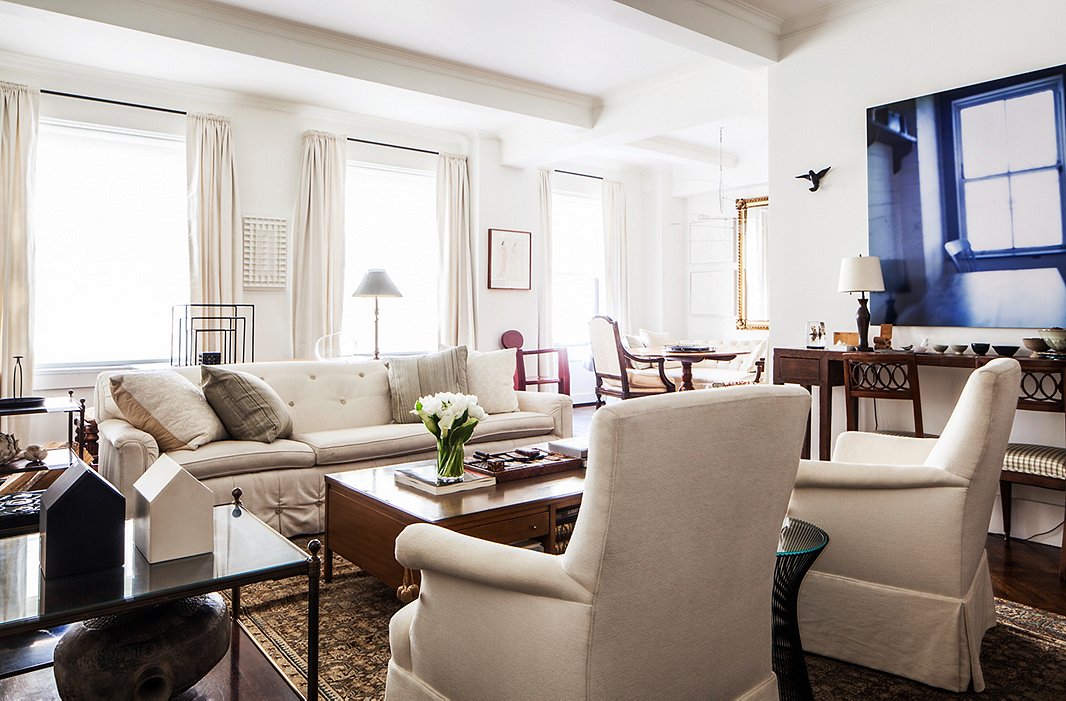
“There are no children, so I don’t have to be careful,” Mariette says of her white upholstery. The sofa was designed by Syrie Maugham—a legendary designer of the 1920s famous for her all-white rooms—and the coffee table is by the American midcentury designer Paul McCobb.
Let There Be Light—and White
“This isn’t a big, rambling apartment,” Mariette says. “That wouldn’t have been good for a single person. But I have the whole floor, and I love that I have light in the back, light in the front.” White drapes and pure white walls heighten the effect—and make Mariette happy. “White is my absolute favorite color. I think it’s refreshing, it’s invigorating. And I see other colors in it somehow.” The paint is color consultant Donald Kaufman’s Number Five. “I can’t explain it, but his colors are extraordinary.” Mariette says she’s partial to white because it “doesn’t fight with things, and it doesn’t create that sense of traditionalism that white trim and red walls does. That’s not to say I haven’t done a dark red library for someone if they wanted it. I’m not afraid of color—I love color, and I work with color all the time—but I think that if you want to have collections and art, white makes sense.”
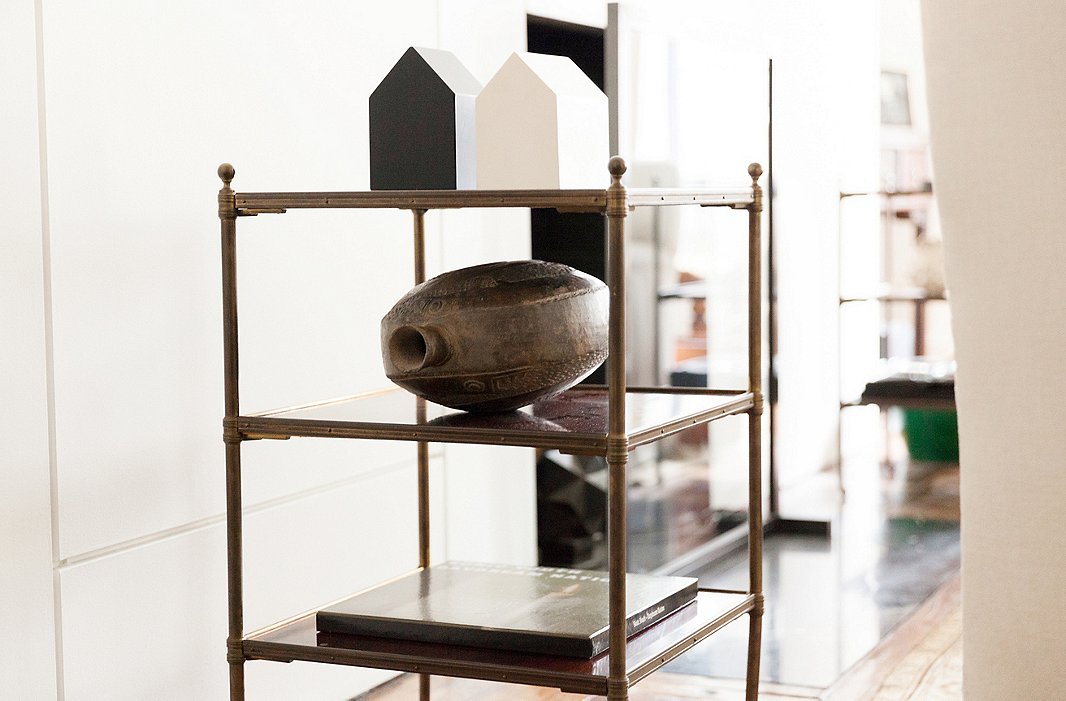
Alongside a pale, traditional sofa, a tiered end table showcases an unexpected collection of objects: two little houses (the white one was made by an artist, the black one found in a store) and a glazed pottery vessel purchased in Lima, Peru.
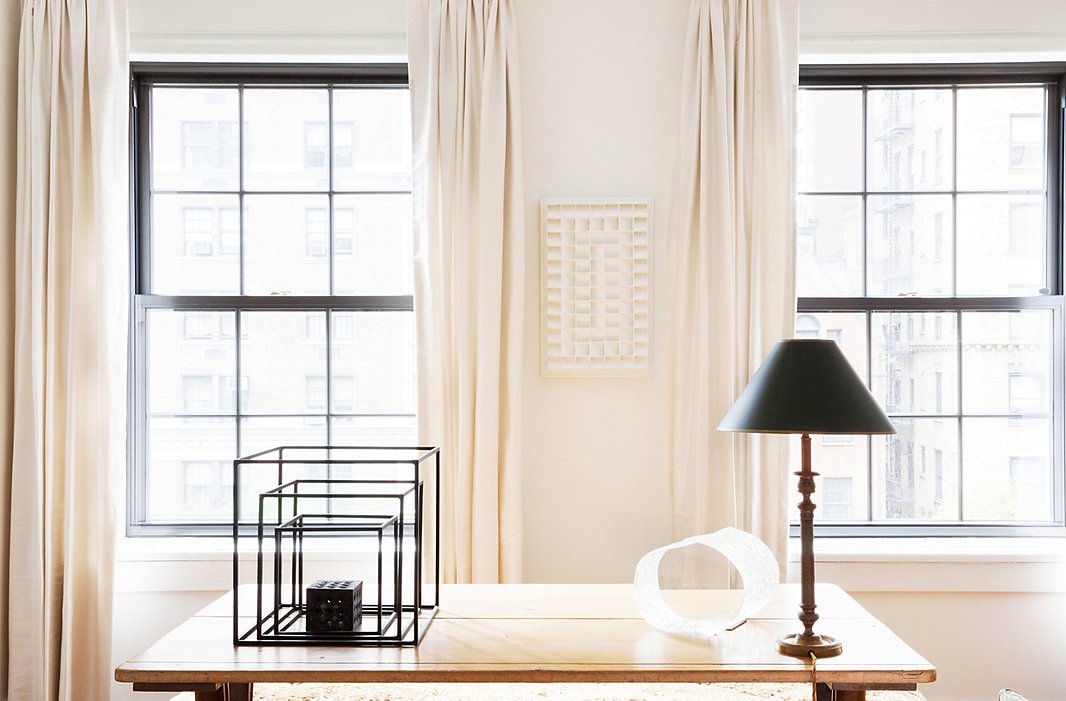
The pale backdrop of an English Regency refectory table highlights the striking silhouettes of an antique lamp and two very contemporary works of art: a set of metal cube frames and a glass sculpture. The paper wall art is by Dutch artist Jan Schoonhoven.
The Importance of 3-D
Much of the art in Mariette’s apartment is three-dimensional, which she believes adds a great deal to a space: “If you go into an apartment where the person hasn’t used a designer, sometimes everything feels flat.” The three-dimensional objects in her home include mobiles, art objects, and many, many chairs, which she calls “my sculpture.” Some might find it odd to have a pair of circle-back side chairs facing away from the main space in a living room, but Mariette says, “I love those chairs! And if we have extra people we turn them around. Have you counted how many chairs I have in my apartment? There are a lot of chairs.” Chairs also make appearances in two dimensions, showing up in multiple photographs and paintings.
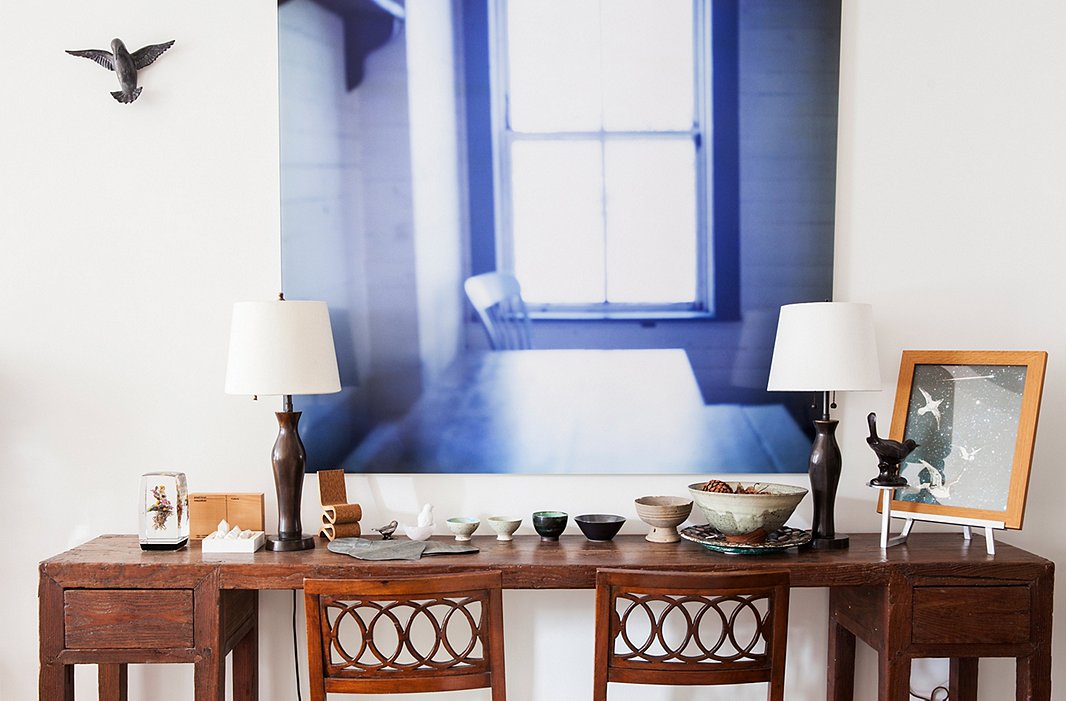
A quiet, contemplative photograph by Seton Smith hangs over a late-18th-century Asian sideboard and a collection of small bowls, mostly gifts. Multiple representations of birds dot the apartment, including the hummingbird sculpture perched on the wall here.

White is my absolute favorite color. I think it’s refreshing, it’s invigorating. And I see other colors in it somehow.
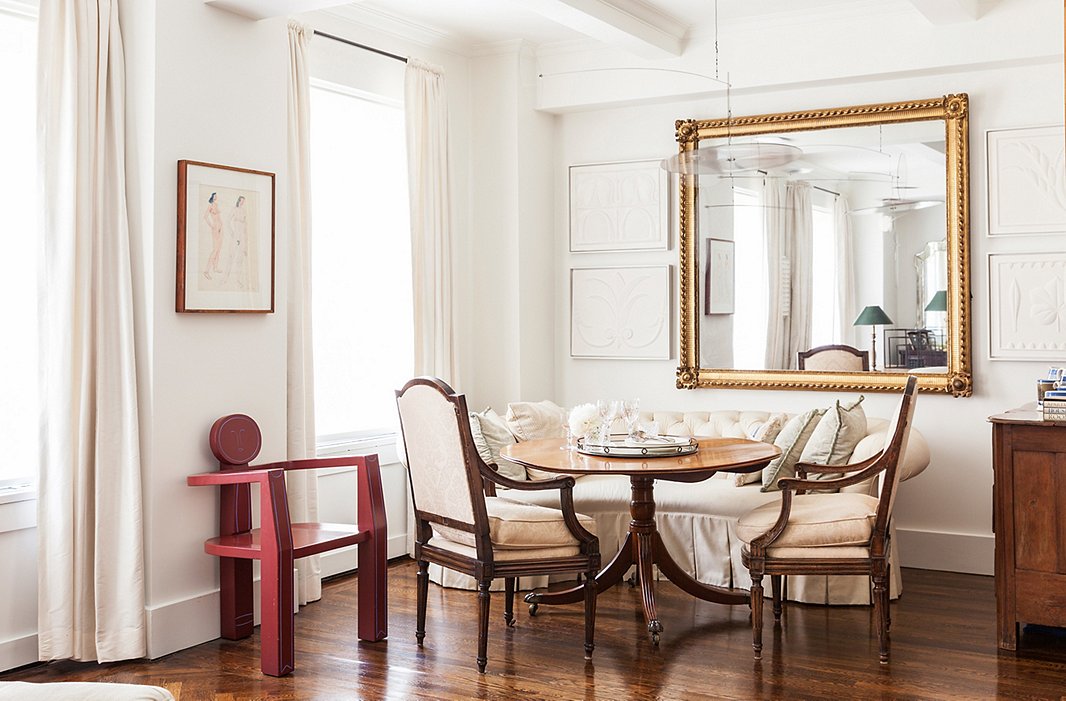
A very contemporary, very red three-legged chair by artist Alan Siegel energizes the neutral dining area. Mariette designed the curved couch.
A Dining Room That Actually Gets Used
Mariette’s unconventional dining area cannot accommodate a big dinner party, and that’s how she likes it. She knocked down the wall that had originally carved the space into a small dining room, and there was no way to make a bigger one. “But if you’re a single woman you don’t really need it. This is a place where I can sit down and have dinner by myself or with friends. I’m not going to have more than two people on the sofa and two on the chairs. If I do have lots of people we just eat at the coffee table.” As Mariette points out, most dining rooms never get used. “Probably they’re used on Thanksgiving, but I go other places for that. I go to Brooke’s.”Brooke is Mariette’s daughter and now partner at her firm.
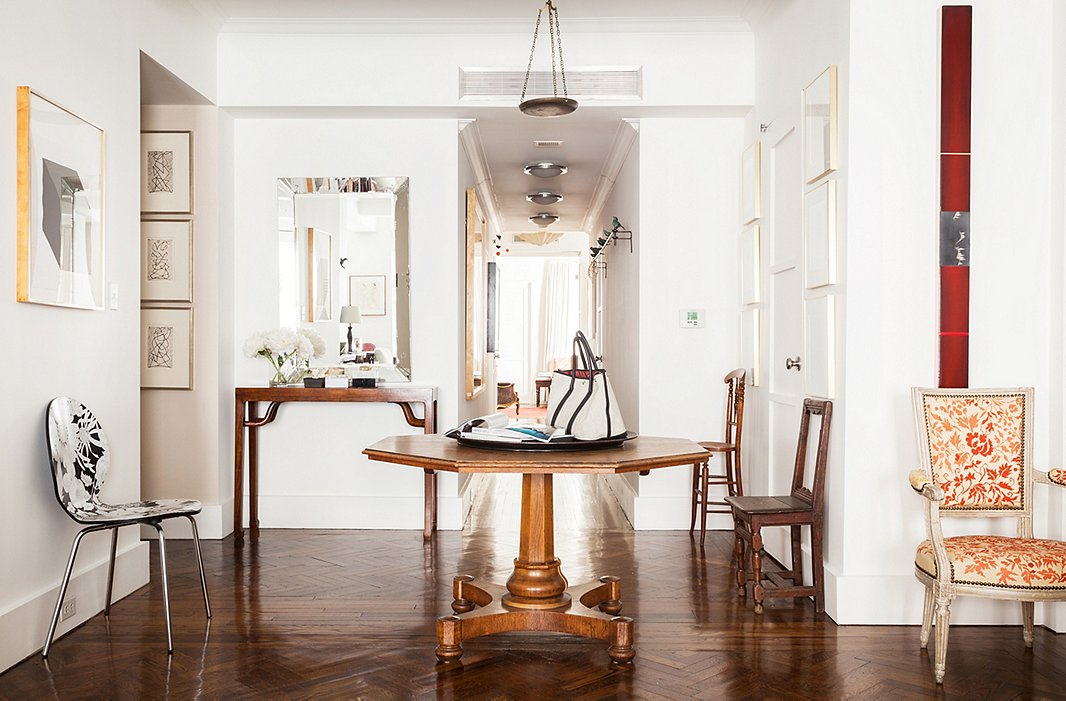
Most of the apartment’s floors are bare, which highlights the shapes of Mariette’s beloved chairs and helps the space feel open by allowing the eye to travel uninterrupted.
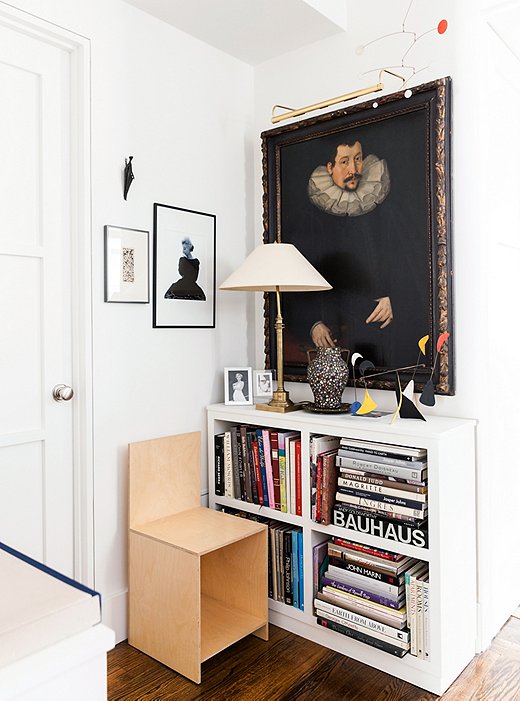
Proof that antique and modern objects can work together: A dark Flemish painting hangs above a chair designed by Donald Judd and alongside a black-and-white photograph of Marilyn Monroe taken by Bert Stern in 1962.
Keep Your Fancy Fashion; I’ll Take Art
“I have some serious furniture here,” Mariette says of her antique pieces, but she doesn’t spend a lot of time talking about what era and country each is from, and she’s certainly not an antiques-only person. “I like a curlicue here and there,” she says. “But I live in this century. And I do love contemporary art.” She’s a regular visitor to museums and galleries (“It’s kind of my hobby,” she says), and it’s not uncommon for her to become smitten with an object. “Some people like dresses. My daughter loves ‘one more dress.’ I work with people who never wear the same dress twice. I could wear a uniform, but my rooms have to be dressed. I know it sounds corny, but I’m just saying I could care less about some fancy dress, but I could obsess over an object.”
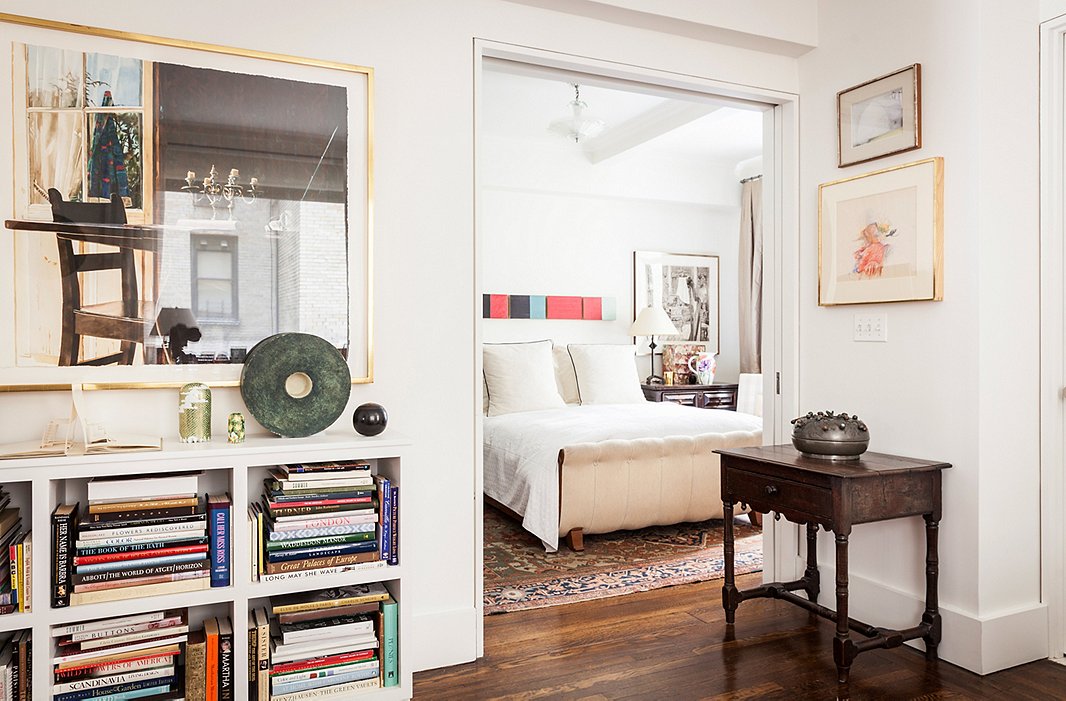
A pale bed and walls let artwork shine. Hanging over the bed (the Calla, designed by Mariette for Hickory Chair) is a set of paintings by Yuko Shiraishi; outside the door hangs a watercolor by Carolyn Brady.
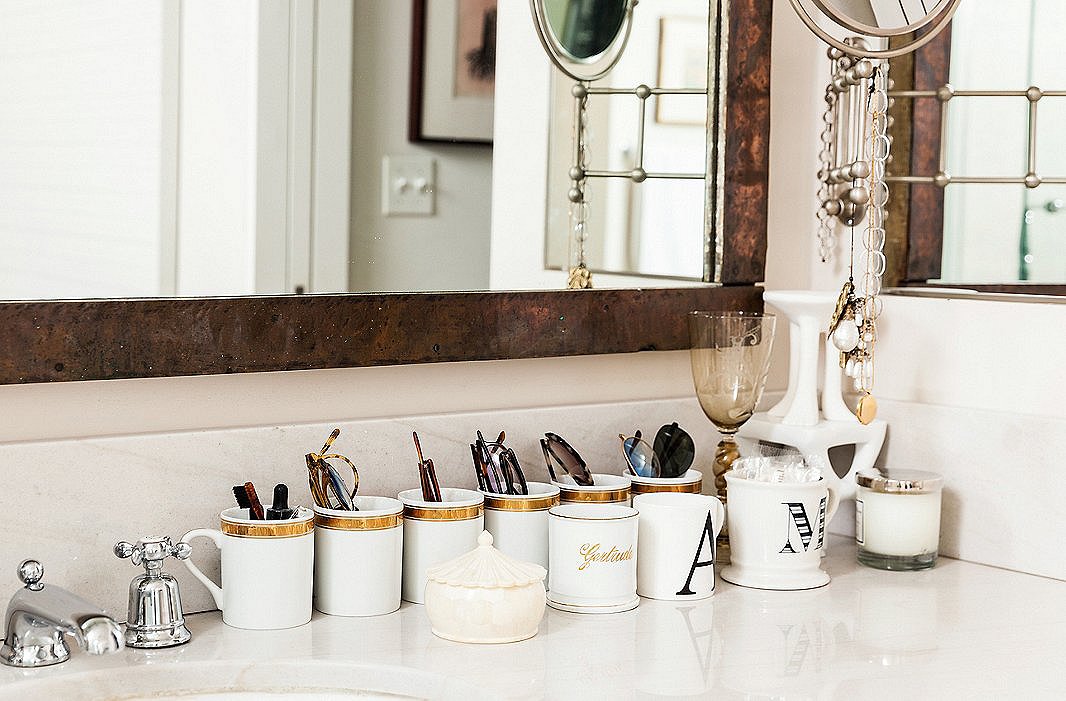
Mariette stores her glasses in mugs given to her at Christmas by former Architectural Digest editor in chief Paige Rense. “They were awards—I wasn’t going to drink tea out of them. And then I started putting stuff in them. I guess I’m practical.”
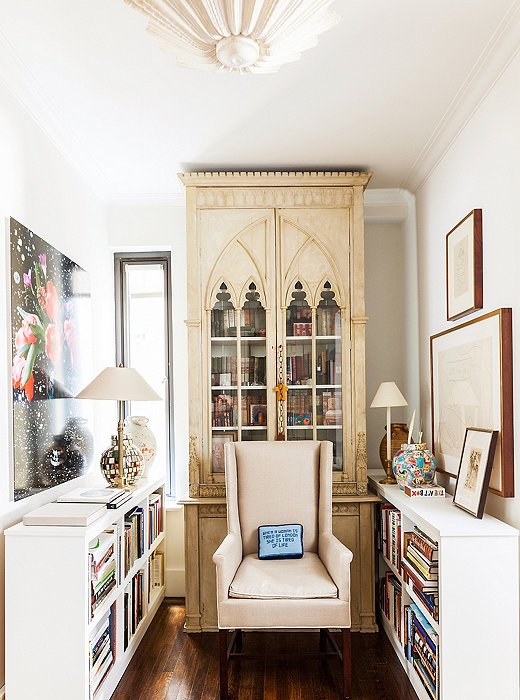
The Gothic cabinet that once occupied her London apartment now has pride of place in the library, which is also home to an invitingly comfortable armchair Mariette designed for Hickory Chair.
Designer Tip: Buy What’s Beautiful, Buy What You Love
Much of the apartment’s zing comes from Mariette’s adventurous assemblage of colorful art and objects. “I’m a shopper, and I’m a traveler. When I see beautiful things I just have to have them.” Emotion, not decorating strategy, guides her buying decisions. “I never say, ‘Oh well, I had an empty table, and I needed to put something on it. If I see something I love, I find a place for it.”
This passionate attitude toward collecting goes for antiques as well as modern pieces. Mariette is not someone who thinks no home is complete without antiques or that certain objects are de rigueur. Instead, she believes in staying open to objects that speak to you. “Antiques do bring a sense of ancestry, but I think a lot of it has to do with something that says ‘hello’ to you and you fall in love with it, whether it’s the patina or the age or the period or the scale. I buy things because of the way they look, and I champion people who take things home that give them pleasure. There’s always a place for something. And if they can’t find one, they can call me.”
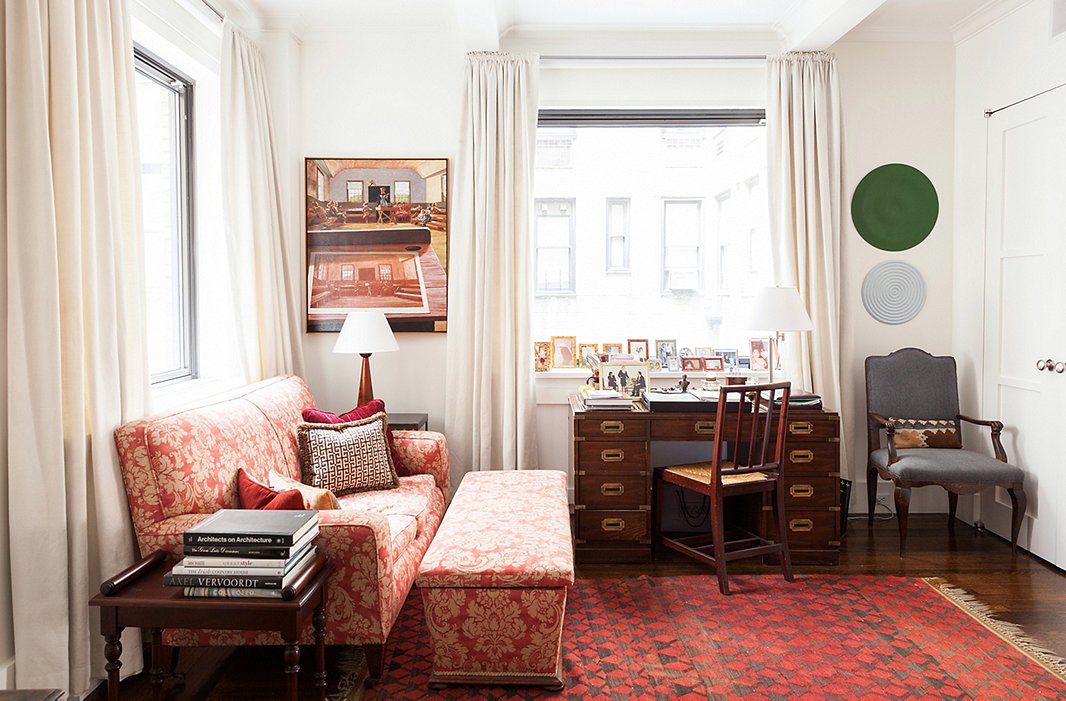
In her otherwise pale apartment, Mariette’s home office, featuring an antique couch and ottoman covered in original fabric and a striking black-and-red rug, testifies to her love of color and pattern. It’s also her favorite place to relax and watch the news. The painting is by George Deem and the oil-on-plywood discs are by Rupert Deese.
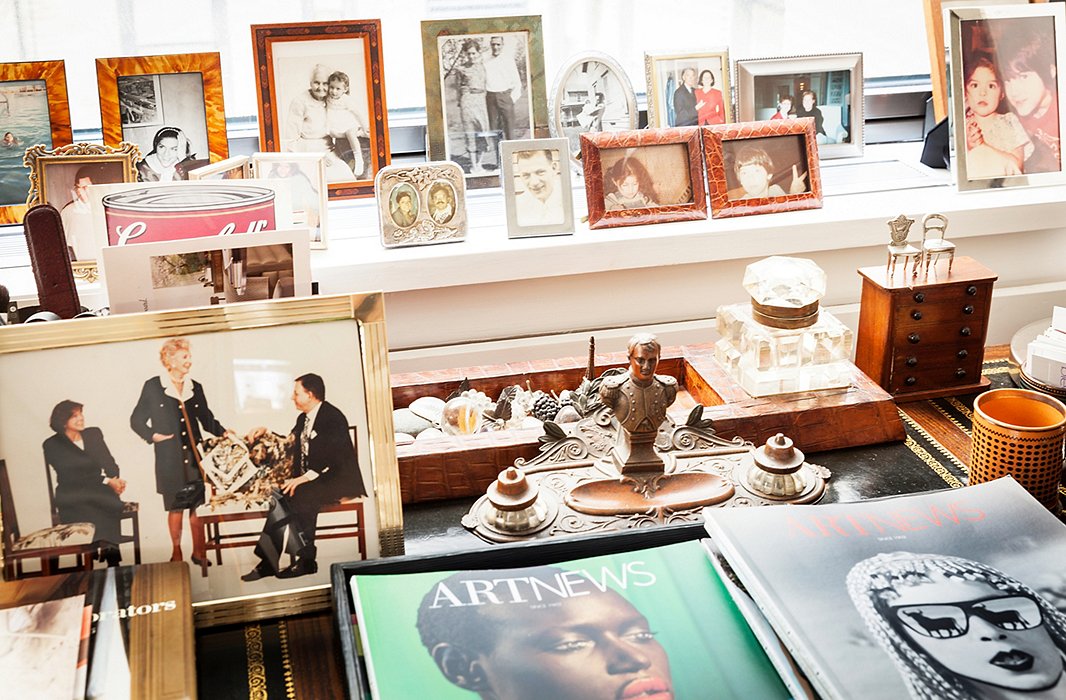
Mariette’s rules for keeping family photos in check: “I only have pictures of very close friends and family, I try to use frames that are all similar if not the same, and I only put them in one place. I don’t put them on every table.”

I buy things because of the way they look, and I champion people who take things home that give them pleasure.
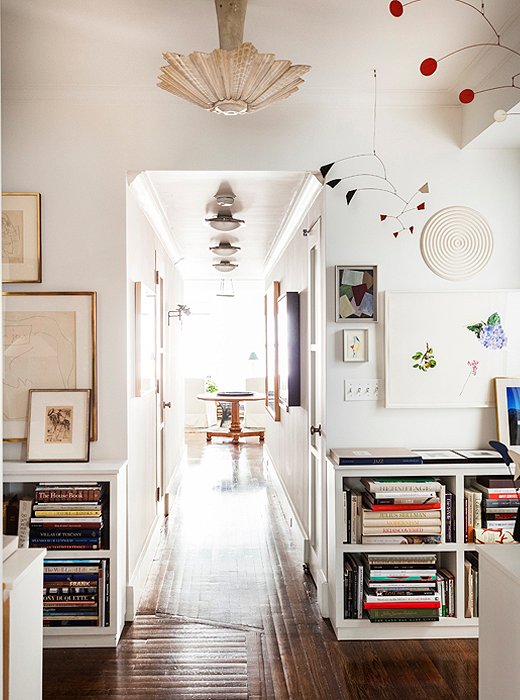
Calder—or Calder-esque—mobiles animate the library. “I don’t know if they’re Calder or if they’re Calder look-alikes, but I love them. It doesn’t matter to me who it is. If I fall in love, I fall in love. I saw them in a shop, and I bought all of them.”
The Perfect Partnership
Mariette was raised by her mother and her mother’s two sisters in a small town in Michigan. Her mother was a gifted seamstress, and all three women excelled in the domestic arts: at setting the perfect table, entertaining, cooking, and keeping house. Mariette decided to be an interior designer as a teenager, and her daughter, Brooke, left law school to work at her mother’s firm. Brooke is now a frequent collaborator with Mariette. Their working relationship is “made in heaven,” Mariette says. “We have the same sensibility, but she grew up with it. Just like I grew up with it. I think it’s just inherent in her personality to have great taste and style.”
Brooke often comes for dinner, and occasionally Mariette hosts friends, but typically she meets friends out at restaurants and saves her hostess energy for her annual Christmas party. Nights in are spent reading, listening to music, or watching the news on the red floral-patterned couch in her office, surrounded by the things she loves. “I love everything in my apartment. I wouldn’t change a thing. If I didn’t love it, it wouldn’t be there.”
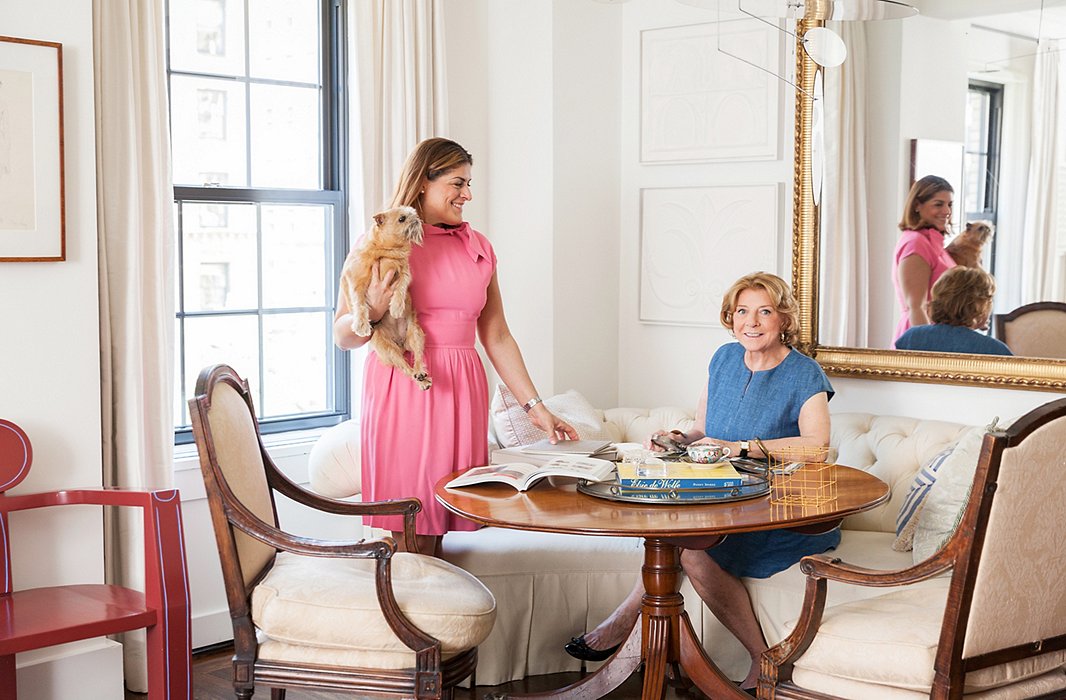
Both daughter Brooke and Eloise, Brooke’s Brussels griffon, are frequent guests in the home.
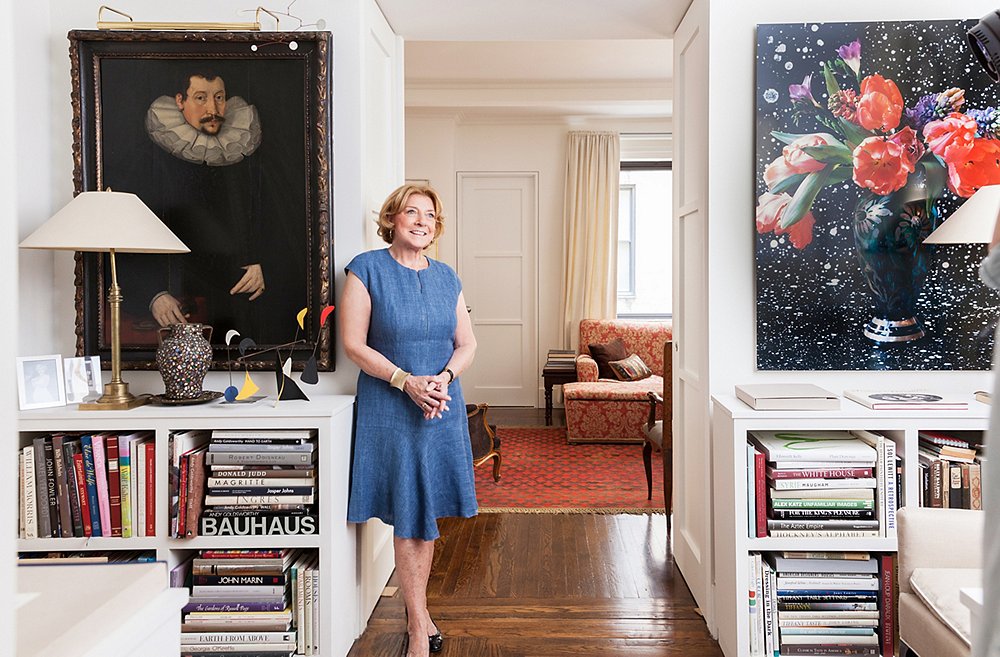
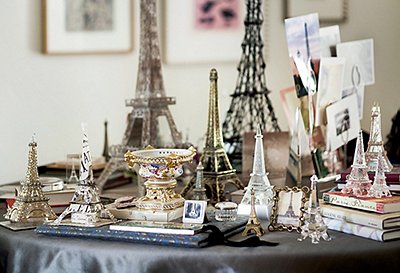
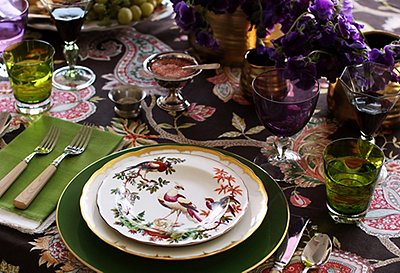
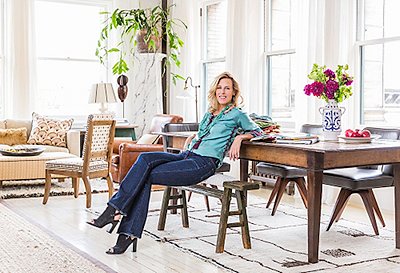
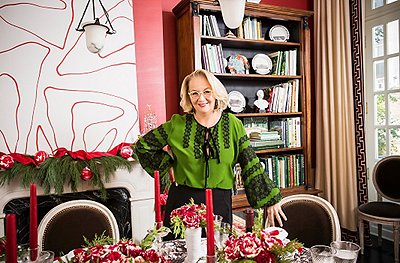
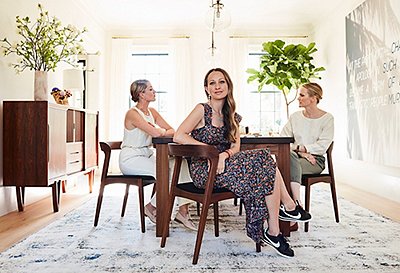
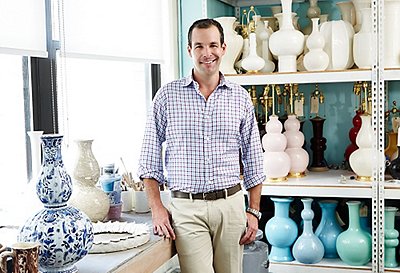
draperies. Draperies. *sigh*
But this is a gorgeous “look-book” and thank you for it. Ideas galore.